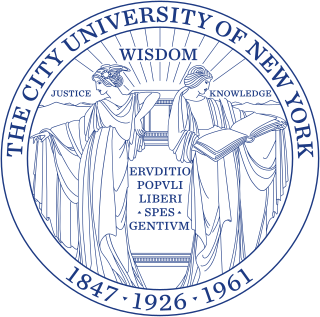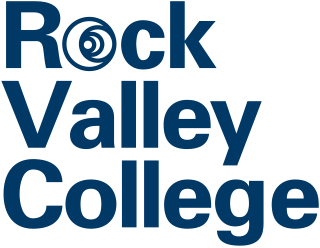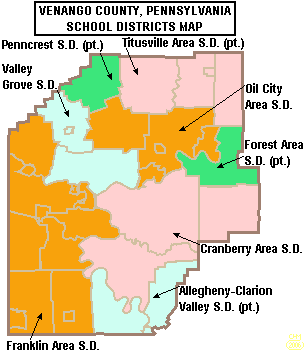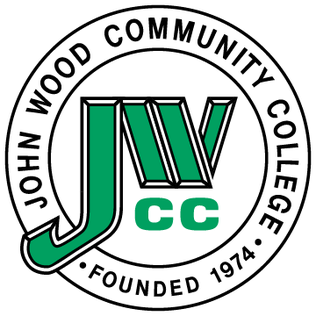
The City University of New York is the public university system of New York City. It is the largest urban university system in the United States, comprising 25 campuses: eleven senior colleges, seven community colleges, and seven professional institutions. In 1960, John R. Everett became the first chancellor of the Municipal College System of New York City, later known as the City University of New York (CUNY). CUNY, established by New York State legislation in 1961 and signed into law by Governor Nelson Rockefeller, was an amalgamation of existing institutions and a new graduate school.
School choice is a term for education options that allow students and families to select alternatives to public schools. It is the subject of fierce debate in various state legislatures across the United States.
Running Start is a dual credit enrollment program in Washington, Hawaii, New Hampshire, Montana and Illinois which allows high school juniors and seniors to attend college courses numbered 100 or above, while completing high school. It is similar to other dual enrollment programs common at public and private colleges and universities in other states like Concurrent Enrollment or Dual Enrollment. Running Start credits are held in equally high regard as Advanced Placement or International Baccalaureate.

The California Community Colleges is a postsecondary education system in the U.S. state of California. Despite its plural name, the system is consistently referred to in California law as a singular entity. The system includes the Board of Governors of the California Community Colleges and 73 community college districts. The districts currently operate 116 accredited colleges. The California Community Colleges is the largest system of higher education in the United States, and third largest system of higher education in the world, serving more than 1.8 million students.

Rock Valley College (RVC) is a public community college in Rockford, Illinois. It is part of the Illinois Community College System. RVC's district comprises Winnebago County, Boone County, and parts of Stephenson County, Ogle County, McHenry County, and DeKalb County. Since opening for classes in 1965, RVC has grown to an institution of 140 faculty members, 500 part-time lecturers, and more than 7700 students.
The California Master Plan for Higher Education of 1960 was developed by a survey team appointed by the Regents of the University of California and the California State Board of Education during the administration of Governor Pat Brown. UC President Clark Kerr was a key figure in its development. The Plan set up a coherent system for public postsecondary education which defined specific roles for the already-existing University of California (UC), the state colleges which were joined together by the Plan into the State College System of California and later renamed the California State University (CSU), and the junior colleges which were later organized in 1967 into the California Community Colleges (CCC) system.

Ashland Community and Technical College (ACTC) is a public community college in Ashland, Kentucky. It is an open-admissions college and part of the Kentucky Community and Technical College System. It was founded in 1938 to allow students the opportunity to obtain associate degrees, certificates and diplomas as well as provide vocational and technical training. The courses offered range from Cosmetology, Culinary Arts, business, education, health-related courses, information technology and a range of industrial technology degrees among others.
Education in Missouri is provided by both public and private schools, colleges, and universities, and a variety of public library systems. All public education in the state is governed by the Missouri State Board of Education, which is made up of eight citizens appointed by the Governor of Missouri and confirmed by the Missouri Senate.

Prairie State College is a public community college in Chicago Heights, Illinois. It is the only college operated by Illinois Community College District 515.
Highland Community College is a public community college in Freeport, Illinois. The college is recognized by the Illinois Community College Board and accredited by the Higher Learning Commission.
Post Secondary Enrollment Options (PSEO) is an academic option open to high school seniors, juniors and sophomores in various US states, such as Minnesota, Ohio and Washington. The options allow students to take courses at the college level. It is possible for a student to graduate with both an associate's degree and a high school diploma at the same time via PSEO. The PSEO program was created in 1985 in Minnesota, and later adopted by Ohio's Department of Education. PSEO enables 10th, 11th, and 12th grade students to complete high school graduation requirements while earning credit at a given college, or university.
In the United States, community colleges are primarily two-year public institutions of tertiary education. Community colleges offer undergraduate education in the form of an associate degree. In addition community colleges also offer remedial education, GEDs, high school diplomas, technical diplomas and tech certificates, and in rare cases, a limited number of 4-year bachelor's degrees. After graduating from a community college, some students transfer to a four-year college or university to continue their studies leading to a bachelor's degree. Community college is tuition-free for selected students in 47 states, often under the name College Promise. Most community college instructors have advanced degrees but serve as part-time low wage employees.
Education in Vermont consists of public and private schools including the University of Vermont, the Vermont State Colleges, private colleges, and secondary and primary schools in the U.S. state of Vermont.

The Cranberry Area School District is a small, rural, public school district which serves the residents of Cranberry Township, Pinegrove Township and Rockland Township in Venango County, Pennsylvania. Cranberry Area School District encompasses approximately 155 square miles (400 km2). According to 2000 federal census data, it serves a resident population of 9,698. In 2009, the per capita income of district residents was $16,307, while the median family income was $39,203 a year. In the Commonwealth, the median family income was $49,501 and the United States median family income was $49,445, in 2010. Per school district officials, in school year 2007-08 the Cranberry Area School District provided basic educational services to 1271 pupils through the employment of 115 teachers, 77 full-time and part-time support personnel, and 7 administrators. In 2006, the 1,308 student population was 98% white, 1% black, 1% Asian, Native American <0.1% and <0.2% Hispanic. The Cranberry Area School District received more than $9 million in state funding, for school year 2007-08.

John Wood Community College (JWCC) is a public community college in Quincy, Illinois. It is one of 48, two-year, open-admission colleges of the Illinois Community College System organized under the Illinois Public Community College Act.

Shawnee Community College (SCC) is a public community college in Ullin, Illinois. It is part of the Illinois Community College System.
Mineral Area College is a public junior college in Park Hills, Missouri. Students can participate in the 2+2 programs offered on campus by Central Methodist University or University of Missouri-St. Louis. The college enrolled 2,640 students in 2019.
The North Carolina Community College System (NCCCS) is the governing body for North Carolina's 58 public community colleges and has been empowered by the state of North Carolina to "adopt all policies, regulations and standards it may deem necessary for operation of the System" by the North Carolina General Assembly. On March 19, 2010, the State Board of Community Colleges approved policy 23 N.C.A.C. 02C .0301 entitled "Admission to Colleges". The State Board has been researching and amending the policy for a decade now and it was implemented on July 10, 2010, after completing the full amendment process. The Admission to Colleges policy states "undocumented immigrants can enter the system's 58 community colleges if they are a graduate of a United States high school, pay out-of-state tuition, and do not displace a North Carolina or United States citizen"
Rockford Public Schools, officially designated by the state as Rockford Public Schools District 205 is a large unit school district located in Rockford, Illinois. In 2012, the district had an enrollment of 26,980 students, making it the fourth-largest school district by enrollment in Illinois. Per student, the school district spends approximately $11,400 on average.
The Pennsylvania school code, section 1327, policy for school choice is, “...to preserve the primary right and obligation of the parent or parents, or person or persons in loco parentis to a child, to choose the education and training for such child.”











